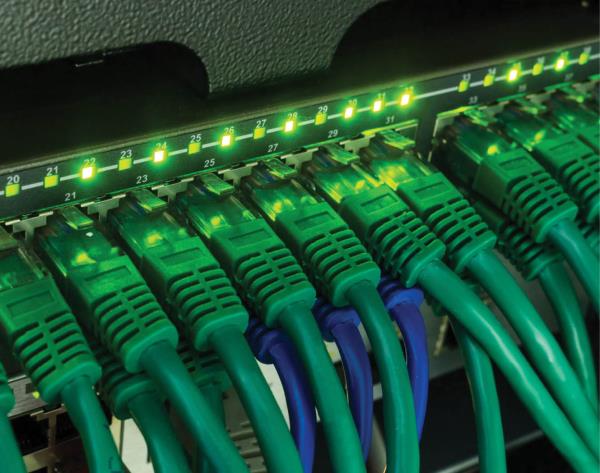05 March 2024

The data centre buy vs build debate continues, but how have recent technological developments like AI, edge and cloud affected things? We ask those in the know for their views on the market...
The question of buy vs build is nothing new for data centre (DC) operations. The benefits of each have long been debated, and a hybrid compromise oft reached that considers the specific needs of the enterprise.
“I don’t believe either building or buying DC space is universally ‘right’ – there are always going to be client or application specific factors which apply and, for a specific use case, make one more advantageous than the other,” asserts Zac Potts, head of sustainability and innovation, Sudlows.
Build?
Naturally, one of the biggest arguments in the ‘buy’ column is flexibility and control over the design, operation, and maintenance of the DC infrastructure.
“By building their own DC, network managers can customise it to meet their specific needs, such as security, performance, intelligence, scalability, and reliability,” says Matt Salter, sales director, Onnec. “They can also choose the best location, equipment, and vendors, and optimise the costs and efficiency of their operations.”
Niek van der Pas, lead data centre expert at Minkels, a brand of Legrand, agrees: “building a DC from scratch provides complete control over the design, layout, and infrastructure specifications. This allows organisations to tailor the DC to their specific requirements and optimise it for their network infrastructure.”
Potts adds that it enables the business to “capitalise on opportunities for sustainability which may be present for an individual use case – for example an edge facility with heat recovery supporting on-site demand.”
Moreover, collaborating closely with vendors in the initial phases provides valuable insights to define realistic objectives aligned with the company’s strategy, says van der Pas. “Achieving ambitious goals for optimal sustainability and maximum security while adhering to stringent budgetary constraints requires transparent and direct communication with all stakeholders.”
Or buy?
The argument for ‘buy’ also contains several compelling points, including savings in time, upfront investment, ongoing expenses for power, cooling, and staffing, and the significant advantages afforded by ready-use infrastructure.
“It’s also worth noting that building a facility follows onto operating a facility, maintaining the electrical and mechanical systems, and undergoing repairs and replacements where required,” explains Potts. “I believe it is often the ongoing operation of the facility, more than the construction, which influences the decision to lease space over building and operating in-house due to the expertise required to do so and the cost uncertainty associated with unexpected failure of equipment.”
Salter highlights the need for network managers “to have the expertise and resources to manage the complex and dynamic challenges of running a DC, such as compliance, disaster recovery, and cybersecurity,” a tough ask given today’s skills shortage.

“Leasing space requires a lower initial investment, a shorter commitment, and the opportunity to increase and decrease capacity over time. Over the long term, it may cost more, but there is also an element of cost certainty during the contract period,” advises Potts.
On the other hand, “purchasing a DC provides network managers with a facility that is already equipped with power, cooling, rack space, physical security measures, and networking infrastructure. This means immediate deployment and management of network equipment without delays,” compares van der Pas.
“While outsourcing certain tasks has long been recognised to leverage expertise and reduce costs, the emergence of generative AI introduces new considerations.”
Potts adds that “the colocation market is competitive, and I do think that this has resulted in an increase in quality across service providers in recent years. There are some very well designed and very well operated colocation spaces, which for some end users will outweigh what they could reasonably deliver for themselves without substantial investment, which for a low-capacity requirement could be somewhat disproportionate.”
However, that’s not without exception: “some colocation facilities do not offer the level of quality, efficiency and service expected, and for some users no matter the quality of the offering, colocation is not going to be a suitable option for their operating model,” warns Potts.
Has AI changed the game?
The benefits of outsourcing versus ownership have evolved significantly with the advent of AI. While outsourcing certain tasks has long been recognised to leverage expertise and reduce costs, the emergence of generative AI introduces new considerations.
“The speed of deployment is a critical factor in the success of AI implementations,” says van der Pas. “Colocation often has the advantage of having availability over yet-to-be-assigned floorspace. Critical here is the flexibility of the initial design to support high density deployment with high power and cooling demands at the rack level.”
Indeed, generative AI and the IT systems which support them impart specific challenges to DC infrastructure which must be factored into the decision for outsourcing. While the technology has the potential to transform various industries and applications by enabling innovation, personalisation, and automation, it also poses new demands, such as high-performance computing, massive data storage, low-latency networking, and enhanced security.
“Therefore, organisations that want to leverage generative AI need to consider whether outsourcing or owning their DC infrastructure is more suitable for their goals, budget, and capabilities,” says Salter.
“I don’t believe that the use of AI fundamentally means that ownership or outsourcing is now better than the other but will certainly impact choice due to the specific demands,” says Potts. “One factor to consider is that AI technology is changing rapidly, and one challenge with building DCs and physical infrastructure has always been forecasting the future requirements. This challenge is significantly amplified by the advent of systems to support AI – what will the requirements in five years look like, and which model can best support that? Invariably time will tell which decisions best served the needs and requirements of individual businesses.”
What about edge vs cloud?
As organisations increasingly digitise operations, manage larger volumes of data, and adopt emerging technologies such as edge computing, the necessity for robust DC infrastructure is likely to rise.
“As with colocation and ownership, discussions and debates around edge and cloud computing will have different use cases seeing a different balance of advantages and disadvantages,” says Potts. “While some users will benefit clearly from one approach, these are not entirely mutually exclusive, and a hybrid model is often possible.”
Salter says that edge and cloud computing both have different advantages and disadvantages for DC deployment and management: “edge computing is useful for organisations that want to avoid data transmission delays and enhance data security, reliability, and scalability, especially for time-sensitive or remote applications. Cloud computing is useful for organisations that want to access a wide range of IT services and resources, without having to own or maintain physical hardware and software. Depending on their needs and preferences, organisations can choose to either own or colocate their edge, cloud computing infrastructure, or use a hybrid or multi-cloud approach that combines elements of both.”
Indeed, cloud allows users to focus on the application layer, without the need to manage the hardware and associated M&E systems, but this comes at a premium, as well as a compromise in self-sufficiency and control.
“Cloud has certainly allowed for a large number of inefficient on-premises small DCs and comms rooms to be decommissioned, allowing for overall efficiency gains and staff to focus more on the services provided, however the trend towards hosting cloud services in a smaller number of hyperscale facilities delivers diminishing returns from an efficiency perspective, introduces inefficiencies in the transit of data from the user to the facility, and precludes the opportunities for sustainability which an edge DC can deliver,” says Potts. “When making decisions with regards to edge, cloud, colocation and ownership, it is important to ensure that all factors are taken into account, and in particular, a wide view of sustainability.”
Meanwhile, van der Pas asserts that “as the demand for low-latency applications rises with the emergence of technologies like IoT and AI, the expansion of edge computing is expected to accelerate. Edge DCs that are closer to the sources of data generation will likely see increased investment and development, enabling faster processing, reduced network latency, and improved performance. If latency is crucial the control over the network is essential and is likely operated by a single provider. This can also be solved with more complex infrastructure, multiple providers, and carrier neutral edge DCs. Not close to the edge but in-between the cloud and the far edge.”
The future of DC operations
There will always be enterprises with no interest in building and operating their own DCs, just as there will always be those who value the control enabled by ownership.
“Both options will continue to coexist and evolve, as different organisations have different requirements and preferences for their DC infrastructure,” opines Salter. “However, in addition to increasing demand for cloud computing, edge computing, and generative AI, there will be a growing awareness of environmental and social responsibility, and the emergence of new technologies and standards. DC providers and operators will need to adapt and innovate to meet the changing needs and expectations of their customers, as well as the challenges and opportunities of the digital landscape.”
No matter the outcome of the build vs buy discussion, “facilities within which space is bought or leased, or within which cloud services operate, still require building and it is fair to say that to meet the growing demands, in whatever form they take, a lot of new facilities are required to be built,” says Potts.

van der Pas, meanwhile, believes that the next few years will see increased focus on constructing or utilising DCs powered by renewable energy sources to minimise environmental impact.
“Expectations from DCs will include supporting the necessary technology demands and addressing renewable energy and sustainability concerns. Energy-efficient designs and technologies will be prioritised to ensure sustainability and minimize carbon footprints along with market trends and technological advancements that will influence the expectations for DCs in the future,” says van der Pas.
Moreover, adherence to regulations will become essential as the market moves from adopting best practices to establishing standards and eventually meeting regulatory compliance.
“Only if you are willing to keep up with these requirements will a new build DC be in your reach. The big advantages of maintaining control can only be attained through close cooperation with suppliers. Therefore, choosing suppliers capable of offering a comprehensive understanding of these new aspects is crucial,” shares van der Pas.






.jpg?lu=248)

